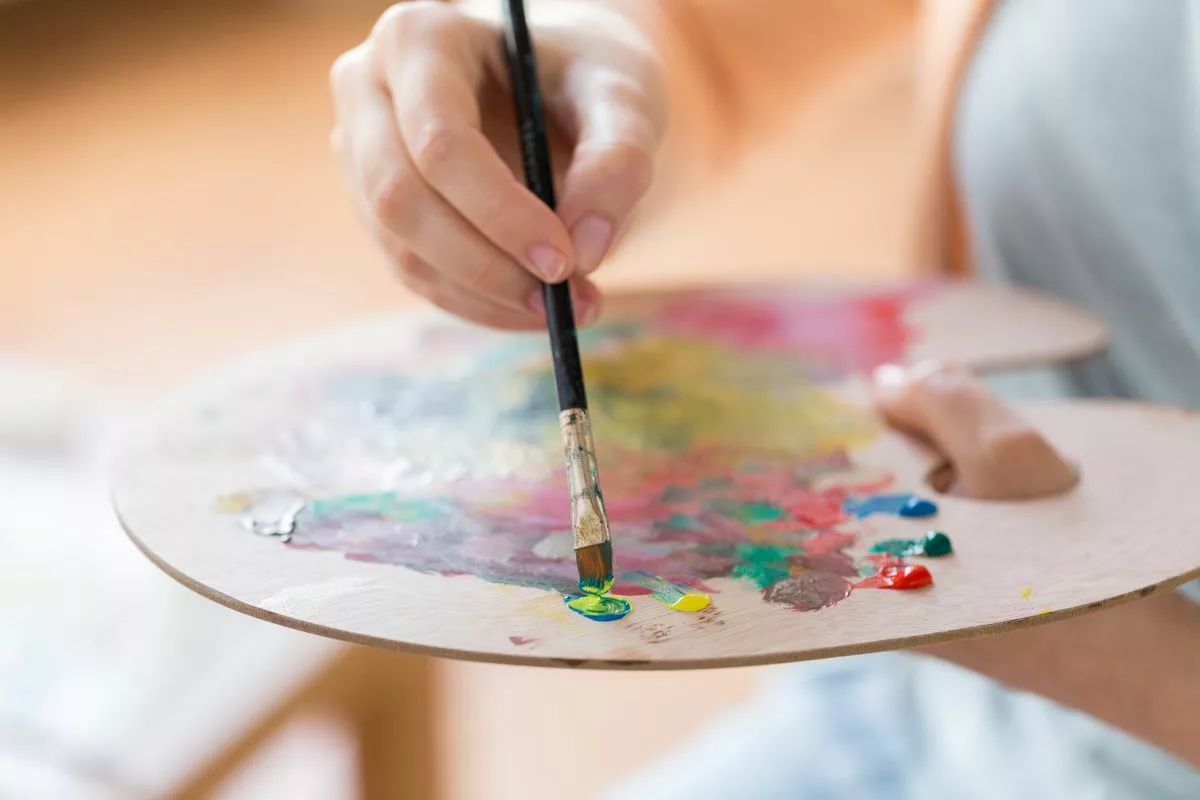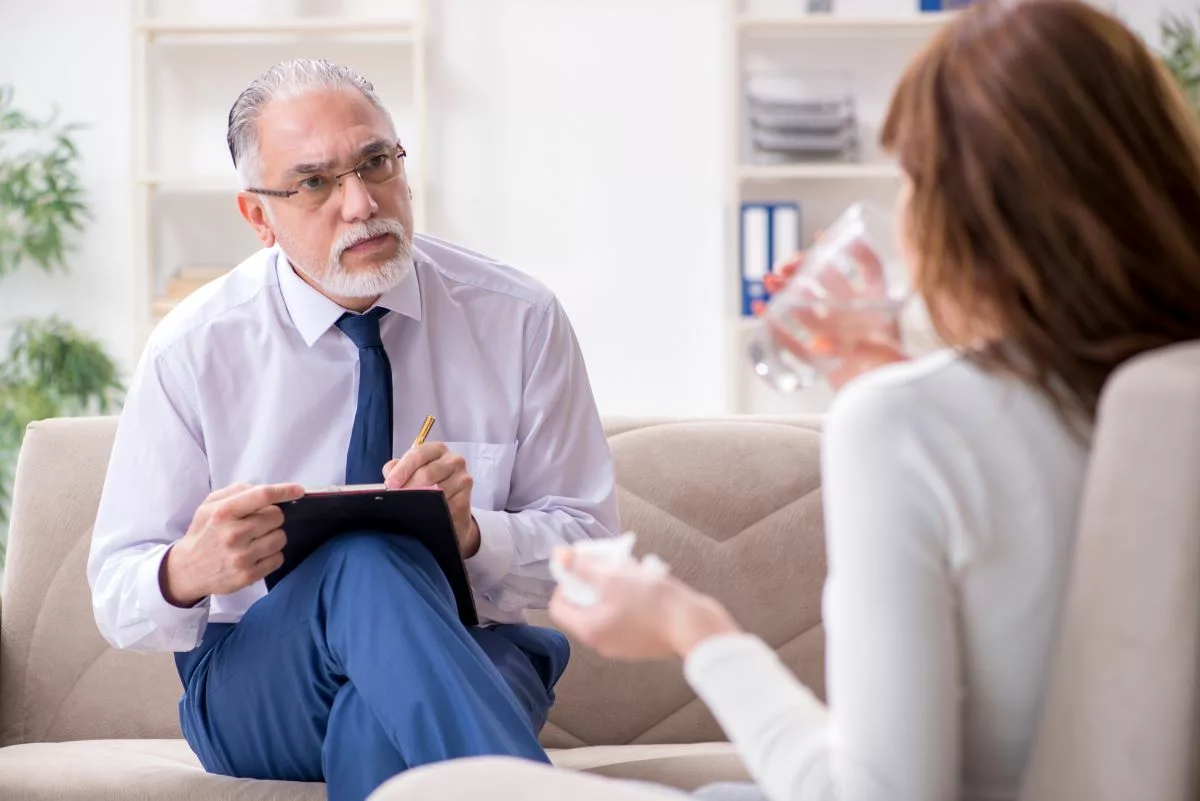
Art therapy is a therapeutic technique that empowers people to explore and confront emotional challenges through the creative process. The journey of mental health recovery is as varied and unique as each individual who walks its path. Over the years, therapists and healthcare professionals have sought diverse approaches to help patients find their way to healing. Among the vibrant mosaic of therapies available, this colorful modality stands out. Let's explore how art therapy can help you heal if you've been struggling with your mental health.
What Is Art Therapy?
Art therapy is a therapeutic method that merges the worlds of art and psychology. It provides people with a platform to express, explore, and confront emotional challenges through the creative process. The term art therapy generally refers to creating visual art, but it's closely related to music therapy and drama therapy, which use those creative avenues for self-exploration and healing.
The Benefits of Art Therapy
Research has demonstrated the effectiveness of art therapy in treating patients with a wide variety of mental health conditions. A 2015 study found that patients with personality disorders who participated in art therapy experienced improved sensory perception, more personal integration, and greater emotional regulation and insight into their behavior. Over 70% of participants felt a significant decrease in distress after a single session of art therapy, underscoring its immediate and profound impact.
A literature review published in the American Journal of Public Health cites multiple studies showing that engaging in creative activities can reduce stress and improve mood, highlighting the intrinsic therapeutic properties of artistic pursuits.
The Therapeutic Power of Creation
The relationship between art and therapy isn't merely about producing artwork. The process itself — the act of creation — plays a pivotal role in healing.
Self-Expression and Self-Discovery
Art offers an outlet for emotions that might be too raw, confusing, or painful to articulate verbally. Through creative expression, you can uncover layers of their psyche that you were previously unaware of.
Emotional Insight
The act of creating art allows for an unfiltered flow of emotions and thoughts. For many, it becomes a voice when words seem inadequate or overwhelming. By externalizing feelings onto paper, canvas, or clay, you can better understand your innermost thoughts and emotions.
Catharsis and Release
Transferring emotions onto a tangible medium can be incredibly cathartic. For those dealing with trauma, grief, or addiction, art can act as a safe space to confront and release pent-up feelings.
Confidence and Self-Worth
Completing an artwork instills a sense of accomplishment. Over time, as individuals see their progress and growth, it can boost confidence and reinforce a positive self-image.
Art Therapy in Practice
While art therapy can benefit almost anyone, its application and techniques vary based on individual needs. Here are a few examples of art therapy techniques that are effective in encouraging self-expression.
Directed Projects
A therapist might suggest specific projects or themes to help you confront particular issues or emotions. For instance, someone dealing with loss might be encouraged to create a tribute piece.
Free Creation
Here, individuals are given the freedom to create anything they choose. This unstructured approach allows spontaneous exploration of emotions and thoughts.
Group Sessions
Art therapy isn't always a solitary journey. Group sessions foster a sense of community, allowing members to share experiences, offer support, and appreciate the diverse ways in which their peers express themselves.
Art Therapy as a Form of Self-Care
Although working with a psychotherapist trained in art therapy can be a transformative experience, finding one (or being able to see a therapist at all) can be a challenge. If you want to explore art therapy on your own, here are some tips.
Just start creating, without judgment.
Draw what you feel. Don’t worry about whether your art is “good” or “bad;” that’s not the point. Art therapy is about expressing and processing emotions, not getting praise or criticism from others who see your creations. Art is subjective and very much in the eye of the beholder anyway.
No one ever needs to see your art. It’s for you and you alone. But if you do choose to show it to someone, make sure they’re a trusted person who understands and embraces your journey.
The Ability Toolbox member LaTonya has created a wonderful guide to therapeutic digital drawing that discusses how it has helped them process childhood trauma.
Show your art to your regular therapist as a conversation starter.
Even if your counselor doesn’t have experience with art therapy, they should understand the value of creativity as a form of self-expression. Ask your therapist about bringing your art to sessions and discussing the feelings it brings up for you. If your therapist isn’t open to this, it might be a sign they’re not the right fit for you.
Make creativity part of your routine.
Creativity is supposed to be spontaneous, right? Wrong. Between work, family, and other responsibilities, many of us don’t have the luxury of being able to stop in the middle of whatever we are doing to engage in artistic expression. The best way to be consistent with art for self-care is to set aside a time every day (or a few times a week, whatever you can manage) to focus on it. It might be difficult at first, especially if you’ve had a stressful day and your mind is elsewhere, but instead of trying to put those thoughts out of your head, you can use them as inspiration for your creations.
Try art journaling and heartwork journaling.
If you've struggled to keep a journal, you might enjoy art journaling instead. Even if you're already keeping a written journal, adding doodles and drawings could help you access your inner life at a deeper level. I highly recommend the work of Maritza Parra and Lynda Barry, especially if you're struggling to let go of fears about your art not being “good enough.”
What to Create for Art Therapy
When they think of art therapy, most people imagine drawing and painting. But any form of art can be therapeutic. Pottery, sculpting, sewing, knitting, and jewelry making are also valid ways to explore your feelings through creativity.
You don’t need to be “good” at the type of art you choose to create, but it’s best to choose an art or craft with an easy learning curve so you won’t get frustrated while trying to master the basics. If you’re overwhelmed, start with adult coloring books or abstract art. The Ability Toolbox member Katey has created a great list of purposeful yet restful creative self-care activities that are ideal for people with chronic illnesses and disabilities.
Embracing the Colors of Recovery
Recovery isn't linear; it's a spectrum of emotions, challenges, setbacks, and triumphs. Art therapy embraces this spectrum, offering a rainbow of mediums and techniques to match each hue of the human experience.
A Brush with the Future
The mental health community's increasing acknowledgment of holistic and alternative therapies has paved the way for methods like art therapy to shine. With its blend of expression, introspection, and healing, art therapy promises to remain a vital tool in the therapeutic arsenal.
In conclusion, art therapy isn't just about creating art; it's about forging a bridge between emotion and expression, pain and palette, challenge and canvas. In the interplay of colors, strokes, and forms, you can find a sanctuary where healing blossoms and recovery is painted in vibrant hues.
Coffee junkie. Spoonie. Writer about all things chronic illness and mental health. Friend of animals everywhere.
Dr. Wilson graduated from Rosalind Franklin University of Medicine and Science and completed her residency in Internal Medicine at Advocate Good Shepherd Hospital in Barrington, IL. Dr. Wilson specializes in providing culturally competent and trauma-informed care to patients with physical disabilities. In addition to her private practice, she works as a science communicator, teaching health literacy to middle school and high school students in her local school district.
















Start the discussion at community.theabilitytoolbox.com